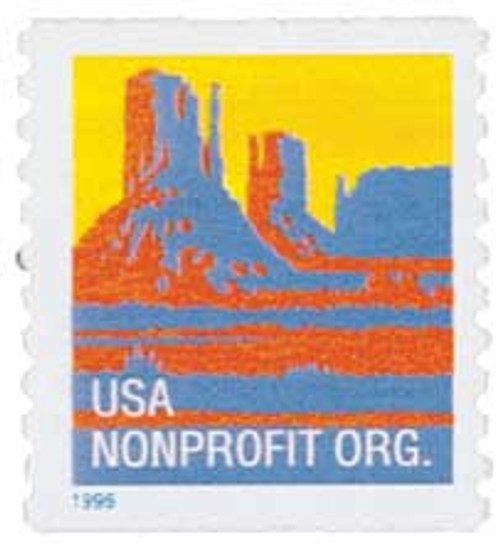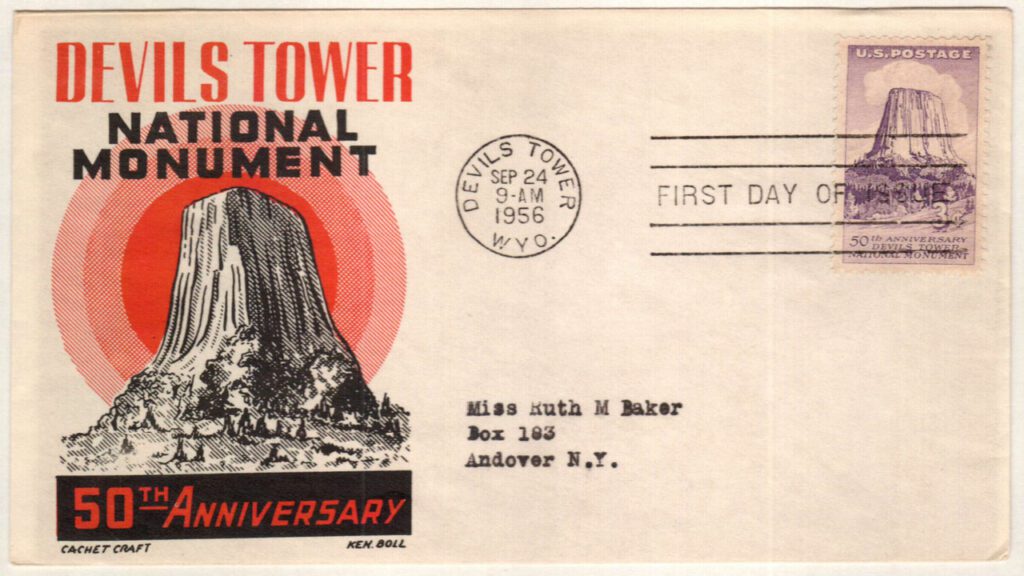On September 24, 1906, President Theodore Roosevelt took a historic step in the protection of America’s natural and cultural treasures when he proclaimed Devils Tower in northeastern Wyoming as the first United States National Monument. This designation, made under the brand-new Antiquities Act of 1906, marked the beginning of a tradition of preserving special landscapes for future generations — a legacy that continues today in more than a hundred national monuments across the country.
Devils Tower is one of the most striking geologic features in North America. Rising 1,267 feet above the surrounding plains and the Belle Fourche River, the formation seems to jut out of the earth like a giant stone pillar. Its almost perfectly vertical columns and flat summit make it instantly recognizable, and its size makes it a landmark visible for miles in every direction. Geologists believe the formation is the hardened core of an ancient volcano, formed roughly 40 to 50 million years ago. Over millions of years, erosion slowly stripped away the softer surrounding rock, leaving the harder volcanic columns exposed in their dramatic shape. Today, climbers from around the world visit Devils Tower to ascend its natural columns, while others simply come to marvel at its unique beauty.

For centuries, the tower has held deep spiritual meaning for Native American tribes of the region, including the Lakota, Kiowa, Cheyenne, and Arapaho. Many know it as “Mato Tipila,” or “Bear Lodge,” a name that reflects a well-known legend. According to one version of the story, seven young girls were playing when a giant bear began to chase them. The girls prayed to the Great Spirit for rescue, and the ground beneath them rose toward the sky, carrying them out of the bear’s reach. The bear tried to climb the rising rock but slid down, leaving long, deep claw marks on the sides. The girls were lifted into the sky and became the seven stars of the Pleiades constellation. These stories give the tower a sacred significance, and many tribal members continue to hold ceremonies in the area today.

The landmark first caught the attention of US military and scientific expeditions in the mid-19th century. In 1875, Colonel Richard Irving Dodge led a US Army expedition through the region and recorded the site for wider public knowledge. One of Dodge’s interpreters reportedly mistranslated the Native name as “Bad God’s Tower,” which was later shortened to “Devil’s Tower,” the name that eventually stuck.
Efforts to protect the tower and the surrounding land began in the 1890s. Senator Francis E. Warren of Wyoming successfully pushed for the creation of a forest reserve around the formation in 1892. Though the reserve’s size was later reduced, Warren continued to advocate for stronger protections and even proposed making the area a national park. That idea stalled in Congress for over a decade, but it laid the groundwork for later action.

The turning point came with the passage of the Antiquities Act in June 1906. This important law gave the president of the United States the authority to protect “objects of historic or scientific interest” on federal lands by designating them as national monuments. The act was partly a response to widespread looting of archaeological sites in the Southwest and reflected a growing conservation movement in the early 20th century. President Roosevelt, an avid outdoorsman and one of the era’s leading conservationists, quickly embraced this new power. Just three months after signing the act into law, and at the urging of Wyoming Representative Frank W. Mondell, Roosevelt issued the proclamation that made Devils Tower the very first national monument.
Devils Tower has earned a place in popular culture. Most famously, it was featured as the dramatic setting for the 1977 science-fiction film Close Encounters of the Third Kind, which introduced the landmark to audiences worldwide. The film turned Devils Tower into an instantly recognizable icon, inspiring many people to visit and experience the monument for themselves. Its starring role on the big screen only deepened its reputation as a mysterious and awe-inspiring place.
Beyond Close Encounters, Devils Tower has appeared in documentaries, television shows, and even video games. It has inspired album art for several rock bands, and shows up regularly in photography and advertising as a symbol of the American West. These appearances help keep the monument in the public imagination and continue to draw new generations of visitors to its base.

Today, Devils Tower National Monument attracts nearly half a million visitors each year. It stands not only as a natural wonder but also as a symbol of America’s commitment to preserving its most important landscapes and cultural sites. Roosevelt’s decision in 1906 set a precedent that would protect other irreplaceable places — from the Grand Canyon to the Statue of Liberty — under the Antiquities Act. More than a century later, Devils Tower remains a place of wonder, a site of spiritual and scientific importance, and a reminder of how one bold decision helped shape the modern conservation movement.
| FREE printable This Day in History album pages Download a PDF of today’s article. Get a binder or other supplies to create your This Day in History album. |
Discover what else happened on This Day in History.



Love this daily feature with explanations of the history behind the subjects of various stamps. To make this feature even more interesting to stamp collectors, it would be great to add information about the stamp itself, when warranted, e.g., who designed it, why it was picked as a subject of a stamp (if it’s not obvious), and any philatelic points of interest. That would be great. But, I’ll keep reading every day even without those possible additions.
Hi Ron,
Have you tried clicking on the stamp images. The images link to the info on the specific stamp. I think you’ll find the info you’re looking for on those web pages.
Have fun!
I truly enjoy this series! Thank you for creating “This day in History”. I learn “the rest of the story” as Paul Harvey used to say.
Keep up the great work, I love reading these every day.
Great history.
Thank goodness to fixed the Pres. name:)
I, as well as many others, it seems love and appreciate this Day in History. I like how the stamp and story appear instead of having to click to go there. Keep up the good work and know it is appreciated. This is something I can share with the kids I come in contact with at the youth table at our stamp clubs show. The tangible information to bring the past too today’s kids.
I really enjoy reading the stories. I have sent many stories to my grandson’s, hopefully they will get some good history lessons. Keep up the good work.
The movie “Close Encounters of the Third Kind” used Devil’s Tower as a setting for communication and eventually meeting aliens from outer space. Seems I saw a similar geologic formation in the foothills of Eastern Colorado. Of course the Colorado formation was smaller.
Theodore Roosevelt used the newly passed Antiquities Act to create our first National Monument. A National Monument has the same protections that a national park has, but a new national park must be created by a act of congress. Many presidents have used the Antiquities Act to protect scenic and historic sites when congress refused to act, usually because special interests oppose losing resources that they want to exploit.
At 82 years of age and a very long time stamp collector…. Mystic Stamps
Day In History is the very first email that I press to watch….I thank you
Mystic for bring this interesting program for me to enjoy ever day….History
was my minor in college….esp. American History which seems to be a missing
part of school classes today……………..don’t go away Mystic……..
Like Mr Autobelli I am 72 and been collecting sim
Nce I was about 12, that along with the fact I love U.S. History NSAID this new series ,
‘Day In History’ so much pleasure to read. I am looking forward to each day taking time to r
Enjoy this.
Thank you so much for your gift to each of us.
Great details. Thanks for these stories.
Now I’m hearing D-E-C-C-G (or solfege: Re-Mi-Do-Do-So) all day!